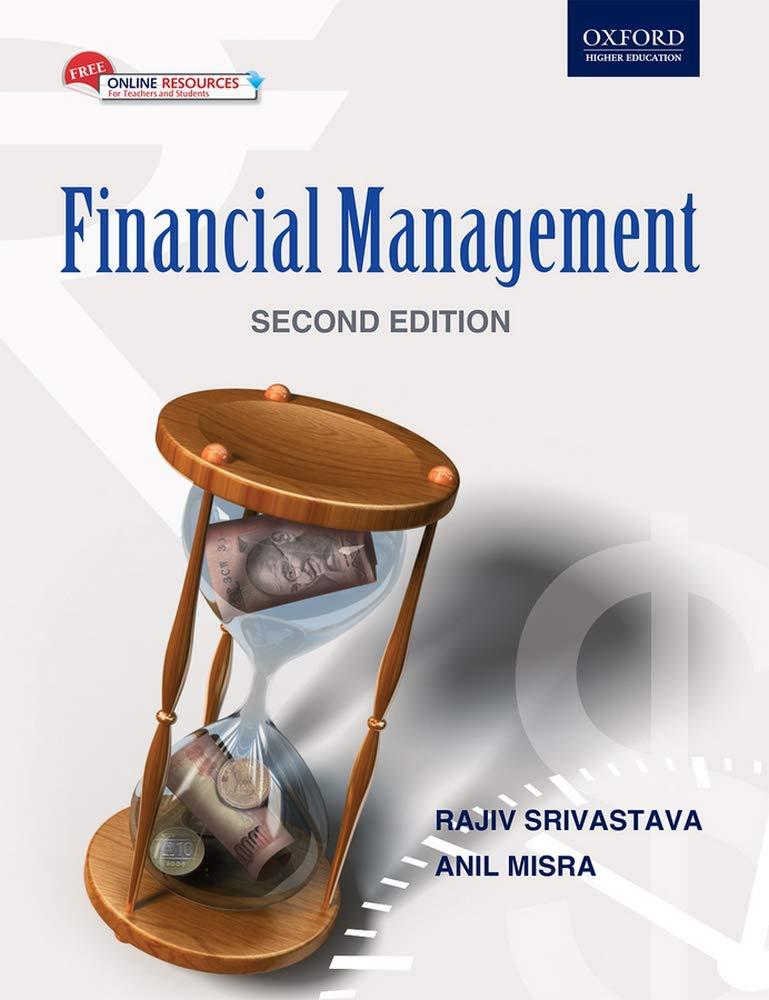Question
To overcome the obstacles entailed by COVID-19 situation, the marketing department has done intensive research and suggested an aggressive 10-year marketing campaign whereby the credit
To overcome the obstacles entailed by COVID-19 situation, the marketing department has done intensive research and suggested an aggressive 10-year marketing campaign whereby the credit terms to customers will be relaxed together with other marketing strategies. This campaign would result in a (forecasted) increase in sales of 3,000 units per year and a cash expense of $50,000 per year. To accommodate the extra demand bring by the marketing campaign, A is considering a possible acquisition of a small regional warehouse facility that could be used to stock the products and make direct delivery to the customers of that region. The new warehouse facility would cost $600,000. It will have ten-year usable life and would be depreciated over its life using the straight-line depreciation method (assume no salvage value). As production manager has produced estimates for the costs associated with the manufacturing of the product. Total variable costs are estimated at $200 per unit, which includes material and labour costs. The unit selling price of the product is $260. As per the above forecasts and assume they remain the same every year, the 10-year marketing campaign and cost-saving due to the acquisition of the new facility would generate free cash flows of $109,000 per year. This estimate reflects all associated revenues/costs, ignores the change in working capital, and assumes revenue/costs are constant over time. To evaluate the above project, A must utilize capital budgeting technique which requires an estimate of the cost of capital. However, A never attempted to determine its cost of capital, while it is difficult to determine the cost of capital of a privately-owned company like A. Therefore, they decided to use a similar listed company as a representative company to estimate the cost of capital in the capital budgeting process. A has a 30% tax rate and the companys liabilities amount to 60% of the total asset. Finally, to finance the strategy suggested by its marketing and production manager, A must liquidate some investments due to tightened borrowing requirements. The company own two types of investments which can be sold: (i) Treasury bonds with $1,000 face value, 10 years to maturity, annual coupons of $50, and yield to maturity of 3% per year, which currently trading at the price of $1100 per unit, and (ii) Ordinary shares of company XYZ, which just paid a dividend of $0.50 per share, with dividend growth prospects of 4% per year and required rate of return of 8%. The share is currently trading at a price of $14. Working as the companys Chief Financial Officer (CFO), I have been asked to assess the above plan and presenting (in a report) your recommendations to the Board of Directors (BoD). Key questions to be addressed Based on the case study above, you are to write a report addressing the following key questions: 1. Based on the forecasted increase in sales, is it possible for A to achieve the corresponding cash and accounting break-even points? Based on your calculations for each - is the marketing departments proposal acceptable? Explain. 2. Calculate the weighted average cost of capital (WACC) of A using available information of a representative company of your choice (e.g., Harvey Norman).
For cost of equity, look for the beta for your chosen representative company from Yahoo!Finance. Get the 10-year yield on government debt (an estimate of risk-free rate) from Bloomberg, and historical market risk premium from http://www.market-risk-premia.com/market-risk-premia.html. You can estimate the cost of debt as well of the same representative company using the Interest expense and Long term debt information from Marketline . 3. Use Payback, Net Present Value (NPV), and Internal rate of return (IRR) to assess whether the investment in the warehouse facility is warranted. Use a payback cut-off period of 5 years for the evaluation of the payback period, and use WACC calculated in question 2 as the discount rate to calculate NPV. Also, please compare the three capital budgeting criteria and discuss which one is better for decision making. 4. Which investment (Shares or Bonds) should A sell to raise the necessary funds? Explain the reasons behind your decision. 5. Based on the answers to the previous questions, determine whether to endorse the plan suggested by the marketing. Then discuss potential suggestions on how to improve the plan. 6. Discuss the limitation of the above analyses.
Step by Step Solution
There are 3 Steps involved in it
Step: 1

Get Instant Access to Expert-Tailored Solutions
See step-by-step solutions with expert insights and AI powered tools for academic success
Step: 2

Step: 3

Ace Your Homework with AI
Get the answers you need in no time with our AI-driven, step-by-step assistance
Get Started


